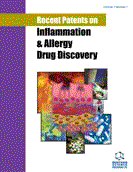Abstract
Due to its high prevalence, allergic contact dermatitis (ACD) has an important economic and occupational health impact on society. ACD presents as an inflammatory response to small molecules and involves both skin resident cells and activated skin infiltrating T cells. Activation of skin resident cells plays an essential role in the initial sensitization phase. A number of different pathways are crucially involved in this phase including the activation of pattern recognition receptors such as TLR, inflammasome activation and production of reactive oxygen species all of which contribute to release of cellular mediators such as IL-1 family members. Chemokines regulate steps in elicitation of adaptive T cell responses including the migration to and presentation of the contact allergen by skin derived antigen presenting cells in the draining lymph node as well as the recruitment of these activated, allergen reactive CD4+ and CD8+ cells back into the skin. The current therapeutic regimens are largely restricted to the avoidance of the contact allergen and the topical use of anti-inflammatory drugs such as glucocorticosteroids. Recent research, as highlighted by current patents, focus on the use of anti-oxidants, the induction of immunological tolerance, interference with cell signaling molecules and blocking of cytokines actively involved in ACD.
Keywords: Contact allergens, IL-1 family, NLRP3 inflammasome, reactive oxygen species, skin inflammation, xenobiotic metabolism, dendritic, cytochrome P450, Contact allergens, cell migration.
 23
23


















